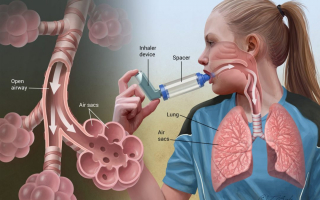Top 5 Signs and Symptoms of Tonsillitis
The tonsils are composed of 2 lymphatic organs (lymphocytes) located at the back of the pharynx, where the respiratory tract and the respiratory tract meet. ... read more...This organ plays a vital role in protecting the respiratory tract in two ways. The tonsils block the entry of pathogenic microorganisms such as bacteria, fungi, and viruses, and the tonsils secrete antibodies against bacterial infections caused by pathogens. Tonsillitis is a common disease in all ages in the community, causing symptoms of sore throat, and difficulty swallowing, even if not diagnosed early and treated promptly, the course of the disease will become more severe, even leading to bacteremia, inflammation of the respiratory system and glomerulonephritis. However, sometimes tonsillitis is misdiagnosed with respiratory conditions, so what are the signs and symptoms of tonsillitis, let's find out with Toplist!
-
According to experts, when having tonsillitis, patients often have symptoms such as burning pain in the neck, difficulty swallowing, bad breath, swollen tonsils, etc. Besides, the patient may have a cough. The reason that tonsillitis causes coughing for patients is that when infected, the throat area always feels entangled and uncomfortable. The mucous membranes, secretions, and pseudomembranous peeling make the patient feel uncomfortable. In addition, the inflamed tonsils also create a burning, dry sensation in the throat, especially in the position on both sides of the tonsil block. These things will make the patient often bitter and cough to reduce the discomfort, and at the same time expel them.
If the disease is left unrecognized for a long time or let them recurs many times, the disease can turn into an overactive tonsil form. At this point, the patient's risk of complications increases even more. In the case of a lot of coughs, a long-term persistent cough can also adversely affect the respiratory system, even causing lung failure. Because tonsillitis can cause many serious problems, it is important to seek medical attention and treat it as soon as possible when there are unusual symptoms.

Sore throat 
Sore throat -
Among the typical symptoms of tonsils, swallowing problems is a subjective complaint of patients that causes many people to worry. This concept needs to be distinguished from dysphagia - the patient is still able to swallow completely and does not need to exert too much effort to get food into the body. Because there are many reasons from simple to complex, the first thing to do is not to be subjective when swallowed. This means actively looking for the cause when the sensation of swallowing is really repeated over several days in a row.
Swollen tonsils and persistent sore throat means that the area of inflammation has spread around the tonsils - between the tonsils and the side wall of the throat due to not recognizing the symptoms in time. At this time, bacteria in the tonsils can grow strongly, causing inflammation and abscesses of the tonsils with symptoms of difficulty swallowing, a swollen and painful throat, and high fever. The condition of swollen tonsils and sore throat is dangerous if not realized promptly and properly, causing complications of endocarditis.

Difficulty swallowing 
Difficulty swallowing -
Tonsillitis is a condition in which the tonsils are infected, red, swollen, and inflamed due to the attack of viruses and bacteria. Tonsillitis can be unilateral or bilateral. This is a very common disease that can occur at any age. Ear pain is also a common symptom in many people with tonsillitis. Tonsillitis causing ear pain is common when tonsillitis persists without early recognition. The bacteria from the tonsils will spread to other parts, especially those near the tonsils such as the middle ear, causing otitis media, in addition to ear pain, the patient will experience many other uncomfortable symptoms.
The symptoms of tonsillitis when complications have appeared will be very difficult, complicated, and long time, to recognize for the patient. When tonsillitis causes ear pain, the disease is already at a severe level, patients need to quickly go to medical facilities for examination. Patients absolutely must not buy drugs for treatment, because improper and incomplete treatment will make the disease progress, causing the risk of complications.

Ear pain 
Ear pain -
Tonsillitis fever is a common ear-nose-throat disease, caused by viruses and bacteria entering the body, causing inflammation of the pharynx, making the tonsils swollen and red. When tonsils are severely inflamed will be accompanied by high fever. At this time, people call this disease tonsillitis or pharyngitis tonsillitis. Usually, the subjects most susceptible to tonsillitis are young children because their resistance is still weak and the immune system is not yet complete, making it easy for the virus to attack.
Depending on the type of tonsillitis as well as the stage of the disease of each person, tonsillitis will have different symptoms. Some people have a high fever, some people only have a mild fever, but there are also people with tonsillitis without a fever. To be able to confirm precisely how many days tonsillitis will go away is very difficult. A statistical estimate of doctors, on average, tonsillitis will cause fever from 1 to 4 days. About 70% of patients will be fever free in about 3-4 days with find out the right time. On the contrary, if ignore the symptom and let them linger, the disease will easily recur, the fever will last long or the fever will go away. Then the fever will return gradually leading to chronic tonsillitis. The duration of an acute illness usually lasts 7 to 10 days.

Fever 
Fever -
The tonsils are two pink masses the size of a thumb, located on either side of the throat wall. It is responsible for producing antibodies, and fighting bacteria that invade through the food and airways. The structure of the tonsils consists of many small cavities and especially there are irregular concave structures. This is a favorable condition for food to be trapped. These foods in the process of deposition will form agglomerate compounds. Depending on the eating habits, oral hygiene, and the condition of the disease, if any, tonsil stones will form in the number and size of the tonsils as well as at different locations of the tonsils.
Because of this location, the tonsils are very susceptible to inflammation. In the case of inflammation, if you open your mouth to look in the mirror, you can see white dots of pus on the surface of the tonsils. Because these are chronic localized inflammations, you may not experience a fever or sore throat. Long-term pus in the cavity of the tonsils clumps into a cocoon and then, due to the action of the throat muscles when swallowing, pops out and disappears. If there are many inflammatory niches or long-term inflammation is the cause of bad breath.

Halitosis 
Halitosis


























